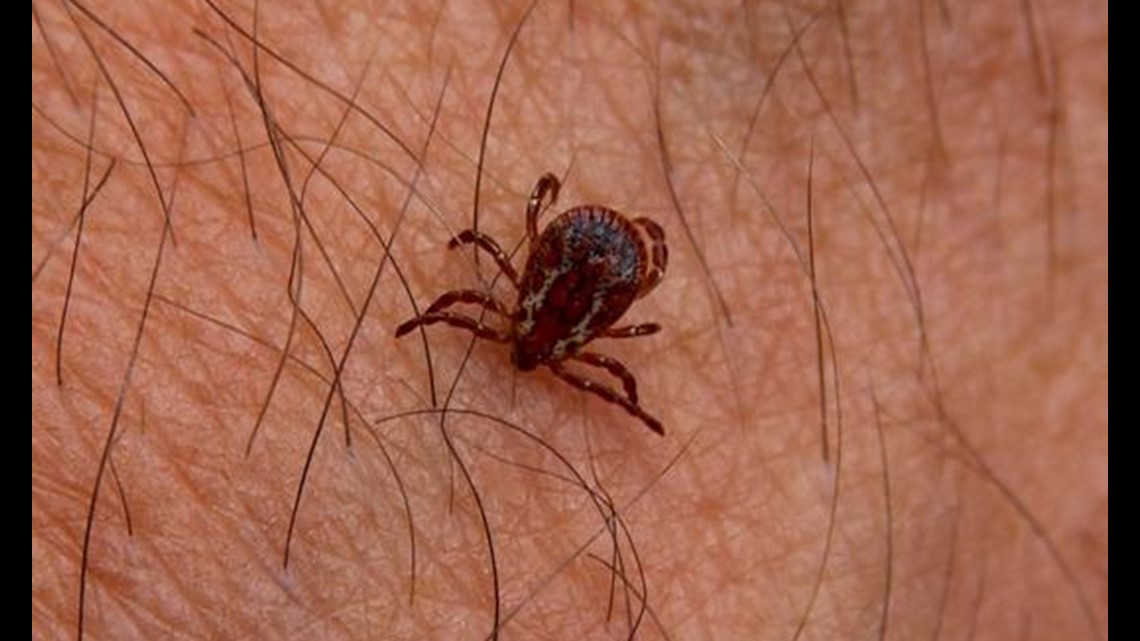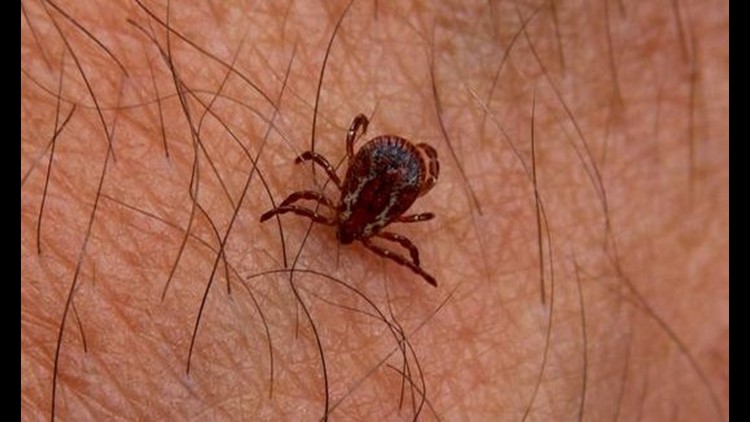

Arkansas is seeing a marked increase of reports of tick-related illnesses, according to the state department of health.
Health officials say mild winters over the last few years may be to blame.
Last year’s case reports totaled more than 650 cases, nearly triple that in 2010, according to a news release from the health department. They expect to have even high numbers this year.
If left untreated, some of these tick-related illnesses and infections can spread to joints, the heart, and the nervous system.
Four tick-related illnesses are common in Arkansas: Rocky Mountain spotted fever, spread by the American dog tick; Anaplasmosis, spread by the Blacklegged tick; Ehrlichiosis, spread by the Lone Star tick; and Tularemia, spread by many types of ticks and deer fly bites, as well as by rabbits and rodents.
Lyme disease is not native to Arkansas. However, individuals who have travelled to other parts of the country, especially the Northeast and Midwest, might have become infected while visiting out of state.
Symptoms can include the following:
- fever
- headache
- muscle pain
- abdominal pain
- nausea
- vomiting
- rash
Here are some tips provided by the state health department for staying tick-free in Arkansas during the warm months of the year:
- Ticks are most active in spring–summer (April–September)
- Avoid walking in woody or bushy areas, or in tall grass, walk in the center of trails to avoid touching the braches and leaves.
- Ticks will wait on the ends of leaves for a host to come by and brush where they are standing.
- Use products with no more than 30% DEET in them for your skin when you are in areas that could have ticks and use permithrin on clothing and gear. Make sure to follow all directions on the bottle.
- Wear long sleeved shirts and long pants. Tuck the pant legs into your socks or boots.
- Wear light color clothing, this will allow you to see ticks easier if one is on your clothing.
- Check your entire body for ticks, especially in the hair and at the hairline, in the ears, underarms, behind the knees, and in the groin.
- Check pets and gear.
- Shower or bathe soon after you come inside.
- Tumble dry clothes on high heat for an hour to kill any ticks that may be on your clothes.
To remove a tick from your skin use a pair of clean fine-tipped tweezers, grab the tick as close to the skin as possible. Pull the tick upwards at a steady pace. This prevents the mouth parts from breaking off and staying in your skin. If the mouth parts do break off, clean the tweezers and attempt to remove the mouth parts. If you cannot remove the parts just leave them in. Clean the bite area and your hands with soap and water.
According to the CDC these are possible ticks that could be in Arkansas:
- American Dog Tick – mostly spreads Rickettsia rickettsii, which causes Rocky Mountain spotted fever. It can also spread tularemia. These ticks like to feed on dogs and other medium sized mammals, but the will also feed on humans.
- Blacklegged Tick (deer tick) – spreads anaplasmosis. Can spread Lyme disease in other parts of the country, but they do not feed on infected animals in Arkansas, which is why Lyme disease is rare here. Adults ticks feed on birds and small mammals and will sometimes feed on humans.
- Brown Dog Tick– spreads Rocky Mountain spotted fever in Arkansas. Dogs are the main host for these ticks. Lone Star Tick – can spread ehrlichiosis, tularemia, and the causal agent for Southern Tick Associated Rash Illness (STARI). The white-tailed deer is the main host for these ticks.
- Gulf Coast Tick – can spread Ricketesia parkeri ricketsiosis. Deer and small mammals are the primary hosts for these ticks.
For more information and other health matters visit http://www.healthy.arkansas.gov/Pages/default.aspx



